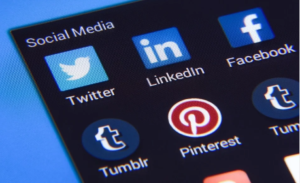Technology is really at the forefront of everything we do and never has this been more apparent than in the current circumstances where we are relying on it more than ever. I work in the finance sector and due to technological advances in recent times I have been able to work from home almost exactly as I would have in the office. In addition, my kids Spanish and piano lesson have moved to fully online. The pace at which we have all adapted is impressive. However something I am very aware of it that this come with increased exposure to screen time and as my own kids are very young it is very important at this age to build a solid foundation in media literacy as this will certainly stand to them in a world that is becoming increasingly digital. I received the below this morning and thought it would be an opportune time to share it. The handbook in link below is also a useful resource for parents as our kids begin to explore the vast digital world that is out there.
#ThinkBeforeClicking: How To Advise Your Children About Media Literacy In The Digital Space
We are living in a time where people are relying on online sources and social media to stay in touch, find accurate information and get news updates. With parents currently home schooling and an increase in screen time for teenagers, what are the top tips we should know and what should we be doing to ensure our younger generations are critically engaging with the information they see online?
Twitter has been working with partners around the world to advance the conversation around media and information literacy. In partnership with UNESCO, it has produced Teaching and Learning with Twitter, a resource for educators to equip younger generations with skills to navigate today’s media environment. Download the handbook here.
“As an open platform for public conversation, Twitter has always championed free expression and free flow of information online. These complementary commitments intersect when we discuss media and information literacy,” said Ronan Costello, Senior Public Policy Manager, Twitter. “We hope that this Handbook will help educators and students navigate an increasingly complicated media environment. We look forward to continued collaboration with UNESCO on how media and information literacy can empower people – especially younger generations – to critically engage with content they see online.”
So what are the top tips we can give to our young people:
- Media Literacy: The old saying of ‘don’t believe what you hear on the radio/ read in the papers’ still holds true in relation to the digital world; we can access so much information online, but they also need a set of competencies to search, critically evaluate, use and contribute information and media content wisely.
- Controlling Your Online Presence: Advise your children to search their name, username and email address on a search engine; check their privacy settings; deactivate or delete old profiles; and always pause and think before you post.
- Protect Yourself Online: It is important to make them understand that in the digital world, there are dangers. Make sure they create a strong password, don’t duplicate passwords on multiple platforms, use an antivirus programme, be wary of spam and pop-ups and finally always know you can mute, block and report users easily on Twitter and other platforms.
- Digital etiquette refers to how we conduct ourselves online and how to do so appropriately. It’s important to be conscious that tone does not always translate to text, and to remember to be empathetic and respectful even when we come across a viewpoint we disagree with.
- Digital Footprints: Choose wisely what platforms they want to be on, constantly perform ‘hygiene checks’ to ensure their data settings are as they would wish, make sure that third-party apps only have access to as much data as is needed, and that their passwords are strong.
You can join in the conversation around media and information literacy, use the hashtags #ThinkBeforeClicking and #ThinkBeforeSharing to help share the message about digital safety for children.
You can follow @MILCLICKS for the latest content from UNESCO’s Media & Information Literacy programme. Follow @Policy for updates from Twitter’s Public Policy team.



No Comments